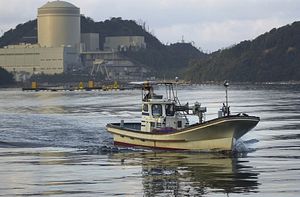Japan’s sweltering summer is well underway, and the effects of all of Japan’s 48 nuclear reactors remaining off-line are in evidence everywhere. Most trains now have at least one car that provides “light air,” or fan only service with no air-conditioning, companies and government buildings are also limiting their use of air-conditioning, train stations are turning off escalators after peak hours, and the iconic Japanese “salaryman” attire with full suit has given way to “cool-biz,” or short-sleeve shirt with no tie. Hand fans are out in full force as people slowly make their way through Japan’s crowded and humid cities.
This is Japan without its nuclear reactors, and many people appear to be willing to sacrifice their comfort to live without the fear of another nuclear disaster. Several recent events underline this popular opinion. On July 3, government sources who spoke with Reuters said that the Kashiwazaki Kariwa nuclear facility, which is owned by Tokyo Electric Power Co. (TEPCO), will not be restarted this year. As the world’s largest nuclear facility, the two reactors the company expected to start this month would have played a crucial role in Tokyo’s energy supply, situated just 300 km (180 miles) northwest of the capital. Some of the government sources said the restart could be pushed back as far as next year, while TEPCO said back in January that if it was unable to restart its Kashiwazaki plant, it may have to raise energy prices by this fall in order to sustain itself, although the sources said the government warned TEPCO against raising prices.
The government’s new safety standards, instituted last July by the Nuclear Regulatory Authority, have also driven up costs for Japan’s 10 major utility companies that operate nuclear reactors. Sources in the industry have said that the new safety measures have increased costs by 50 percent from last year to 2.2 trillion yen ($21.6 billion). Those costs are expected to rise further as companies foresee additional measures, likely in order to meet the NRA’s standards for restarting their reactors. New Safety costs at TEPCO’s Kashiwazaki grew from 320 billion yen last July to 470 billion yen at present, after it applied for NRA clearance last September. The increased safety costs are also expected to cause utilities to raise electricity prices.
And despite the massive amount of money and effort both the government and TEPCO have poured into the cleanup effort at the Fukushima Daiichi power plant, plans to lift the evacuation advisory for Kawauchi, which is within the 20 km exclusion zone, were postponed after Reconstruction Agency officials met with residents who were skeptical of government claims that radiation levels had fallen to safe levels. Citizens of the city began extended stays in April, yet they said insufficient repairs, poor living conditions, and pockets of high radiation still preclude permanent resettlement.
To make matters worse for TEPCO, it has seen a steady loss of its nuclear employees since the 2011 earthquake and nuclear disaster. Around 3,000 employees have left since 2011, leaving the company with a staff of about 35,700, which has strained its ability to deal with the cleanup effort. In September 2012 the company instituted drastic pay cuts, with managers losing 30 percent of their salaries and non-management positions losing 20 percent. Those that have left report the stigma of being associated with TEPCO as a major reason for their departure, especially for those who work near the Daiichi facility. The field of green energy, and particularly Japan’s heavily subsidized solar sector, has been quick to pick up these employees, as their institutional knowledge and government contacts make them highly valuable in Japan’s shrinking labor market.
In short there doesn’t appear to be much indication that Japan’s once dominant nuclear industry will be making even a slow return this year. While the government is seeking to make changes to the NRA’s commissioner panel, that won’t even begin until September. The government’s proposed organization to manage the country’s electrical grid, which will have the participation of 10 major utility companies as well as any new providers, is also intended to reduce inefficiency in the energy sector and increase competition. However, it does not begin operations until April 2015. Without at least some of the country’s reactors coming back online (never mind their additional cost due to new safety features), Japan will continue to depend on fossil fuel imports, and the limitations that puts on an energy grid that was designed to incorporate at least 30 percent of its supply from nuclear power.
































